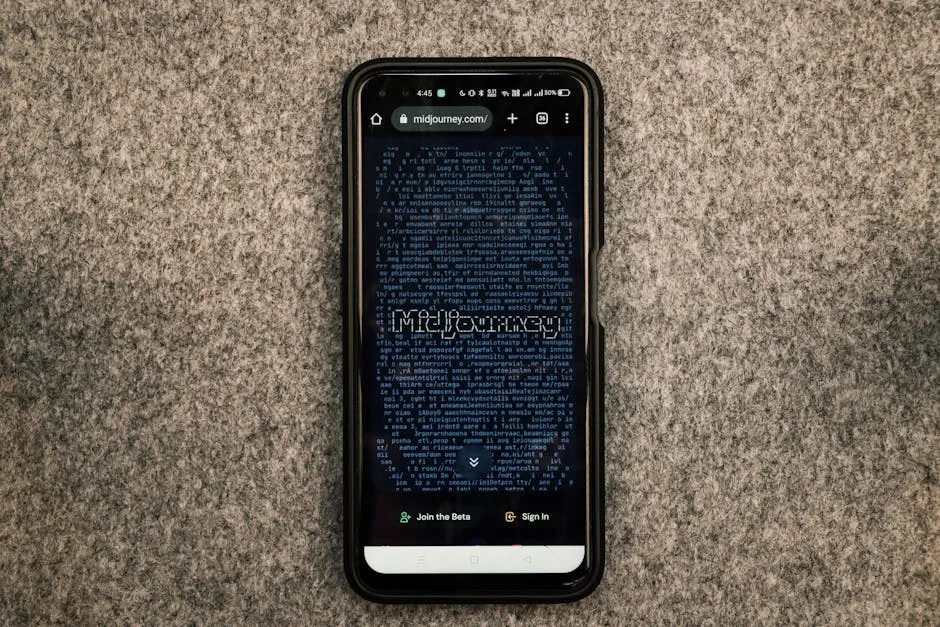When it comes to acquiring new clients, cold emailing can be a powerful tool in your sales arsenal. However, it’s important to approach it strategically and effectively to increase your chances of success.
Table of Contents
ToggleWhat is Cold Email?
A cold email is an unsolicited email that is sent to individuals or businesses with whom you have no prior relationship.
The purpose of a cold email is to grab the recipient’s attention, introduce yourself or your product/service, and encourage them to take a specific action, such as applying for a job or considering your offering.
A good cold email is personalized, concise, and provides value to the recipient. It should have a compelling subject line, clearly state who you are and why you’re reaching out, and end with a clear call-to-action.
The goal of a cold email is to capture the reader’s attention, communicate your value proposition, and persuade them to take action.
The importance of cold emailing in client acquisition
Cold emailing allows you to reach out directly to potential clients who may not be aware of your business or services. It provides an opportunity to introduce yourself, showcase your value proposition, and start building a relationship.
By sending personalized and targeted emails, you can grab the attention of potential clients and pique their interest in what you have to offer.
Cold emailing also allows you to scale your outreach efforts and reach a larger audience compared to traditional methods like cold calling.
2. Common challenges in cold emailing
While cold emailing can be effective, there are some common challenges that you may encounter:
- Getting past spam filters: Many email providers have robust spam filters that can prevent your emails from reaching the recipient’s inbox. To overcome this, it’s important to craft subject lines and email content that are relevant, personalized, and avoid triggering spam filters.
- Writing compelling emails: It can be challenging to capture the attention of busy professionals with limited time. Your emails need to be concise, engaging, and clearly communicate the value you can provide.
- Building trust: Since cold emails are unsolicited, building trust with potential clients can be difficult. Including social proof, testimonials, or case studies in your emails can help establish credibility and trustworthiness.
- Follow-up: Many potential clients may not respond to your initial email. It’s important to have a follow-up strategy in place to increase your chances of getting a response.
By addressing these challenges and implementing best practices for cold emailing, you can increase your success rate and effectively acquire new clients for your business.
Preparing for Cold Emailing Potential Clients
When it comes to reaching out to potential clients, cold emailing can be an effective strategy. However, it’s important to approach it in the right way to increase your chances of success.
Here are some key points to consider when preparing for cold emailing.
1. Researching and identifying potential clients
Before sending out cold emails, it’s crucial to research and identify people who are likely to be interested in your product or service.
Take the time to understand their needs, pain points, and demographics.
This will help you tailor your email messages and increase the chances of a positive response.
2. Building a targeted email list
Once you have identified your perfect future clients, it’s time to build a targeted email list.
Start by collecting email addresses from various sources such as industry directories, social media platforms, and professional networking sites.
Here are some tips for building a targeted email list:
- Use lead generation tools or software to automate the process of collecting email addresses.
- Segment your email list based on factors such as industry, job title, or location to personalize your messages.
- Regularly update and clean your email list to remove any inactive or invalid contacts.
Remember, cold emailing is all about making a good first impression.
Personalize your emails, keep them concise and clear, and highlight the value you can provide to the recipient.
By following these steps, you can increase the effectiveness of your cold email outreach and improve your chances of generating new leads for your business.
How to Write a Cold Email
Here are some key points to consider when crafting your cold email.
1. Tailoring the message to the recipient
Personalization: Start by addressing the recipient by their name and show that you have done your research. Mention something specific about their company or recent achievements to demonstrate that you have taken the time to understand their needs.
2. Validating yourself and establishing credibility
Showcasing expertise: Share relevant accomplishments, case studies, or testimonials that highlight your expertise in their industry. This helps establish credibility and builds trust with the recipient.
3. Addressing the recipient’s pain points or offering value
Understanding their needs: Identify the challenges or pain points that the recipient may be facing and explain how your product or service can help solve those issues. Alternatively, offer something of value such as a free resource or industry insights that they would find useful.
4. Keeping the email concise and engaging
Brevity is key: Keep your email short and to the point. Busy professionals don’t have time for lengthy messages. Use bullet points or numbered lists to make it easy for them to skim through the email and quickly grasp the main points.
Remember, cold emailing is a numbers game, so don’t get discouraged if you don’t receive a response from every recipient.
Keep refining your approach based on feedback and track your results to see what works best for your target audience.
By following these tips, you’ll be well on your way to crafting effective cold emails that grab the attention of potential clients and increase your chances of generating leads.
Subject Lines and Opening Lines
The subject line and opening lines are crucial.
They are the first impression you make, and they can determine whether your email gets opened or sent straight to the trash folder.
Here are some tips to help you create compelling subject lines and captivating opening lines that grab attention.
1. Creating compelling subject lines
- Keep it concise: Make sure your subject line is short and to the point. Busy professionals receive countless emails every day, so a clear and concise subject line will stand out in their inbox. Example: “Quick question”
- Personalize it: Use the recipient’s name or mention something specific about their business to show that you have done your research and that your email is not a generic mass message. Example: “Quick question for [name]”
- Create urgency: Use words like “limited time offer” or “exclusive opportunity” to create a sense of urgency and make the recipient more likely to open your email.
2. Captivating opening lines to grab attention
- Start with a compliment: Begin your email by acknowledging something positive about the recipient or their business. This shows that you have taken the time to research and personalize your message.
- Pose a question: Ask a thought-provoking question related to their industry or business challenges. This can pique their curiosity and make them more inclined to continue reading.
- Share a relevant statistic or success story: Start with an interesting fact or share a success story related to your industry or how your product/service has helped other businesses. This can immediately grab attention and show the value you can offer.
Remember, the goal of your subject line and opening lines is to capture the recipient’s attention and make them want to continue reading.
By following these tips, you can increase the chances of your cold email being opened and generating a positive response.
Structuring the Email Body
When it comes to cold emailing potential clients, the structure of your email is crucial in grabbing their attention and persuading them to take action. Here are some key points to consider when structuring your email:
1. Organizing the email for clarity and readability
Start with a clear and concise subject line that piques the recipient’s interest. Keep your introduction short and engaging, stating the purpose of the email and how you can provide value to their business.
Break up the body of the email into short paragraphs or bullet points to make it easy to read and understand.
Use a professional tone and avoid using jargon or technical terms that may confuse the recipient, unless your niche is highly technical.
Always adapt your messaging to your target audience.
2. Highlighting benefits and solutions
Focus on how your product or service can solve a problem or fulfill a need for the potential client.
Clearly outline the benefits they will gain by working with you, such as increased efficiency, cost savings, or improved results. Use specific examples or case studies to demonstrate how your solution has helped other clients in similar situations. Make it clear why they should choose you over your competitors.
3. Including social proof and testimonials
Including social proof in your cold email can help build trust and credibility with potential clients.
Highlight any awards, certifications, or industry recognition that you or your company have received. Include testimonials from satisfied clients who have achieved positive results by using your product or service.
This can provide reassurance to the recipient that they are making a wise decision by considering your offer.
By structuring your cold email effectively, you increase the chances of capturing the attention of potential clients and compelling them to respond positively. Remember to personalize each email and follow up if necessary to maximize your chances of success.
Call to Action and Closing
1. Crafting an enticing call to action
When cold emailing a potential client, it’s crucial to include a clear and compelling call to action that encourages them to take the next step. Here are some tips for crafting an enticing call to action:
- Be specific: Clearly state what you want the recipient to do, whether it’s scheduling a meeting, requesting more information, or making a purchase.
- Create urgency: Give the recipient a reason to act now by emphasizing limited availability, time-sensitive offers, or exclusive benefits.
- Offer value: Highlight the benefits they will receive by taking action, such as solving a problem, saving time or money, or gaining a competitive advantage.
- Make it easy: Provide clear instructions on how they can take the desired action, whether it’s clicking a link, replying to the email, or calling a specific phone number.
2. Closing the email with a professional tone
The closing of your cold email is just as important as the introduction and body. It sets the tone for future communication and leaves a lasting impression. Here are some tips for closing your email with a professional tone:
- Express gratitude: Thank the recipient for their time and consideration.
- Reiterate your value proposition: Remind them of the benefits they will gain by taking action.
- Provide contact information: Include your phone number, email address, and any other relevant contact details.
- Offer assistance: Let them know that you are available to answer any questions or provide additional information.
- End with a polite closing: Use phrases such as “Thank you for your attention” or “I look forward to hearing from you.”
Remember, the goal of your cold email is to start a conversation and build a relationship with the potential client. By crafting an enticing call to action and closing with a professional tone, you increase the chances of receiving a positive response.
Follow-Up Strategies
The initial outreach is just the beginning. Following up is crucial to increase your chances of getting a response and ultimately closing the deal. Here are some key strategies to help you master the art of follow-up emails.
1. The importance of follow-up emails
Stay on their radar: Follow-up emails are essential because they keep your name and your business in front of potential clients. Even if they didn’t respond to your initial email, a well-crafted follow-up can grab their attention and remind them of your value proposition.
Show persistence: Following up shows that you are serious about working with them and that you are willing to put in the effort. It demonstrates your commitment and professionalism, which can leave a positive impression on potential clients.
2. Timing and frequency of follow-ups
Be strategic: Timing is crucial when it comes to follow-up emails. You want to strike a balance between being persistent and not coming across as pushy or annoying. A good rule of thumb is to wait at least 3-5 business days before sending a follow-up email.
Personalize your approach: Each follow-up email should be personalized and tailored to the recipient. Referencing specific points from your previous email or mentioning any recent news or developments in their industry can show that you have done your research and are genuinely interested in working with them.
Remember, the goal of a follow-up email is to keep the conversation going and build a relationship with potential clients. By using these strategies, you can increase your chances of getting a response and ultimately turning those cold leads into valuable clients.
Tracking and Analyzing Cold Emails
It’s important to not only send out well-crafted messages but also track and analyze the effectiveness of your efforts.
By doing so, you can gain valuable insights into what works and what doesn’t, allowing you to optimize your cold email campaigns for better results.
1. Tools for tracking email open rates and responses
To track the performance of your cold emails, there are several tools available that can provide you with valuable data.
These tools can help you monitor metrics such as email open rates, click-through rates, and reply rates.
2. Analyzing and optimizing cold email campaigns
Once you have gathered data from your tracking tools, it’s time to analyze the results and make improvements to your cold email campaigns. Here are a few key steps to consider:
- Review open rates: Identify which subject lines and sender names are generating the highest open rates.
- Assess response rates: Determine which email templates or messaging strategies are leading to the most responses from potential clients.
- A/B testing: Experiment with different elements of your emails, such as subject lines, call-to-action buttons, or personalization techniques, to see what resonates best with your audience.
- Continual optimization: Regularly review and refine your cold email campaigns based on the insights you gather, aiming to improve open rates, response rates, and overall engagement.
By tracking and analyzing your cold email efforts, you can make data-driven decisions that will help you refine your approach and increase the chances of success in reaching potential clients.
Conclusion
In today’s competitive business landscape, cold emailing can be an effective strategy to reach out to potential clients and generate new leads.
By following a few key points, you can increase your chances of success and make a lasting impression.
1. Recap of key points
- Personalization is key: Take the time to research your potential client and tailor your email specifically to their needs and interests. This shows that you have done your homework and increases the likelihood of a positive response.
- Keep it concise: Busy professionals receive countless emails every day, so it’s important to keep your message short and to the point. Clearly state the purpose of your email and highlight the value you can offer.
- Create a compelling subject line: The subject line is the first thing your potential client will see, so make it attention-grabbing and relevant. A well-crafted subject line can significantly increase the open rate of your email.
- Offer something of value: Show your potential client that you understand their pain points and offer a solution or valuable information that can help them. This demonstrates your expertise and builds trust.
- Follow up: Don’t be discouraged if you don’t receive an immediate response. Follow up with a polite and concise email after a reasonable amount of time has passed. Persistence can pay off in securing a meeting or opportunity.
By implementing these strategies, you can improve your cold emailing skills and increase your chances of success in reaching out to potential clients.
Remember to always be professional, respectful, and genuine in your approach. Good luck!


 I'm Alex. I am a self described creative entrepreneur (and also a fine artist). You could say I'm an abstract painter by day and a tech nerd by night. I worked in sales as a lead generation expert and closer for over 15 years and now I'm sharing my knowledge and experience with others.
I'm Alex. I am a self described creative entrepreneur (and also a fine artist). You could say I'm an abstract painter by day and a tech nerd by night. I worked in sales as a lead generation expert and closer for over 15 years and now I'm sharing my knowledge and experience with others.  Free Cold Email Course
Free Cold Email Course





 No credit card required
No credit card required